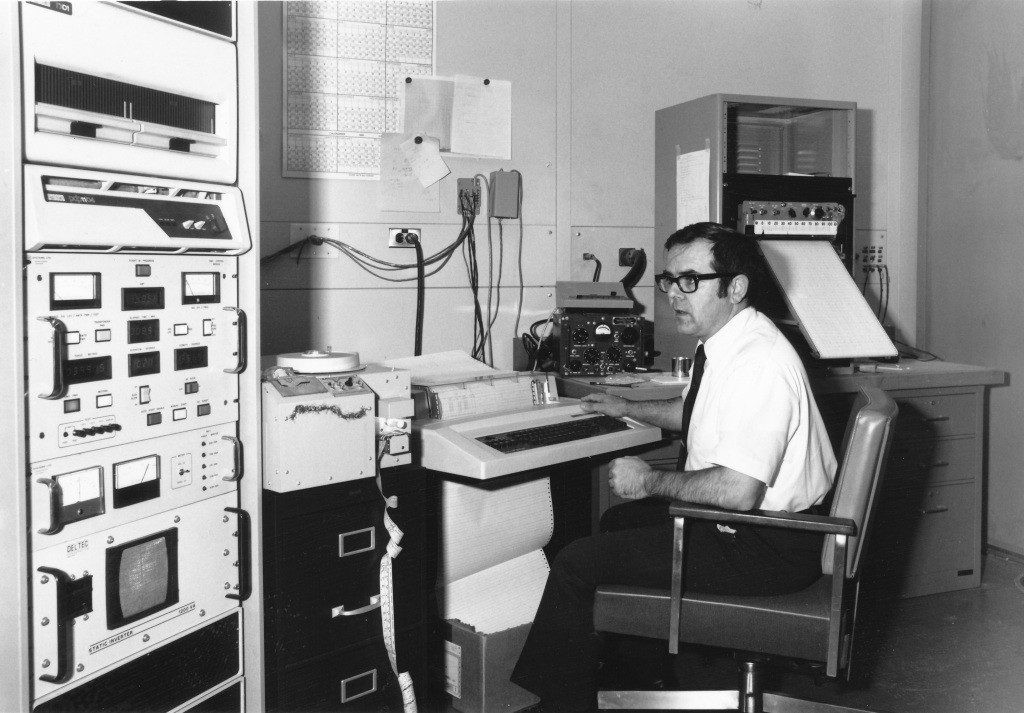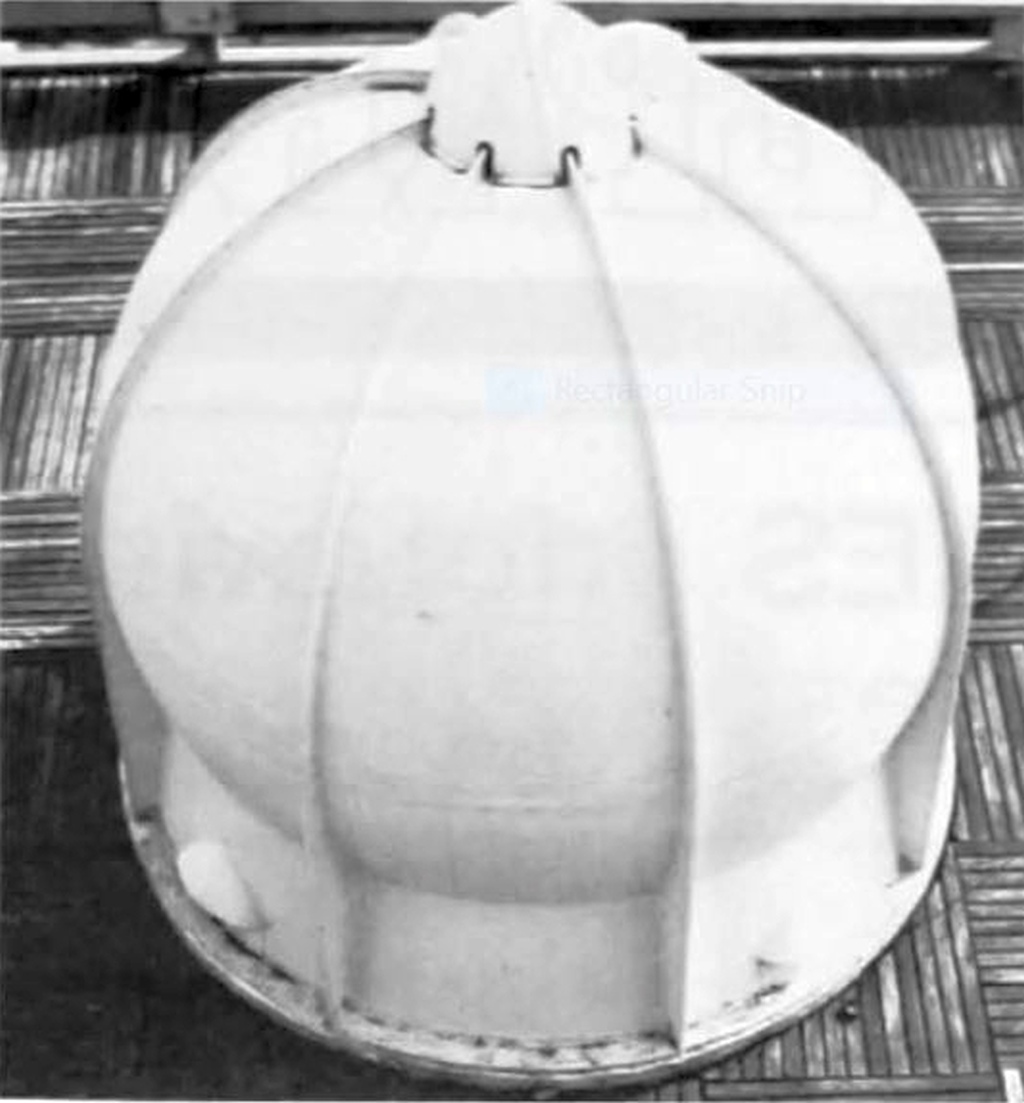see also planning for ADRES in 1978
Photo 1 - ADRES Station in
Downsview Author Ken Devine surveys the ADRES system, including minicomputer, paper tape reader punch, printing terminal and equipment rack, all standard gear in upper air stations. Photo 2 - AES Upper Air Station Dome on the Roofs of New Computerized ADRES Offices  |
AES automates its upper air stations
by Ken Devine (related article published in October / November 1981 issue of Zephyr) AES is automating its 33 upper air
stations. By using its new
Aerological Data Reduction Systern (ADRES) it will end present manual
computation and link general purpose minicomputers to its radiosonde
network.
The new ADRES as designed by SED systems (Saskatoon) was displayed at the Canadian Meteorological and Oceanographic Society's annual congress in Saskatoon last May. It showed ADRES' capability of acquiring wind data automatically and of computing all information quickly and efficiently, putting it out via punched message tape and using a sophisticated command language. ADRES has also been operating experimentally for the past three years with live prototypes at Eureka and Norman Wells NWT, Shelburne, NS, and two in Toronto for testing and training. Seeking to automate wherever possible, AES first considered using computers for its upper air network in 1972. Reducing personnel could save costs. And since these isolated posts had always had considerable staff turnover, adding automation was not considered a threat to morale. In fact it could raise spirits by lessening the drudgery of manual computation. The real advantage of automated computing is that it processes absolutely reliable information. In the past, the urgent need to prepare data for instant transmission caused errors. A computer-based system removes this time pressure and automatically controls the quality of the information. The new style upper air station now contains an ADRES equipment rack and a printing terminal, forming the system's computerized nucleus. Manual data chart recorders still record temperature, humidity and pressure but the tape punch reads the radiosonde's pressure chart and delivers the total message. The printer is both an input and an output device. As before. the receiver is located in a dome atop the office building. The heart of ADRES itself is the minicomputer. Its programs are retained on standard eight inch floppy disks. It's a dual disk system with one drive used for software and the other for the archiving. The software disk contains the data used for flight operations. The archiving disk stores simulated versions of old flights, allowing previously archived flights to be changed and recomputed. Despite ADRES' highly automated character, the station operator is kept fully employed. For instance, when he sees met. data from the radiosonde traced on the record chart, he selects the significant information and enters it into the computer. Indeed, since the observer must be present. there would be no point in automating the meteorological data from the balloon flight. Involving him in actual data acquisition keeps him alert, reduces errors and prevents him becoming bored. Without prompting from the machine, he can enter, delete and modify data as required. The computer will automatically recompute results each time. The observer never has to compute data beforehand, so he can do without slide rules or plotting machines. Next to each computer is a custom electronics panel with built-in metering functions, antenna controls and computer command switches for radiosonde flights. There are also digital readouts and a remote control panel in the balloon release area. Using these displays an operator can release the radiosonde, move the ground meteorological device on target and tell the computer when wind data is valid. The observer may display any information as needed but only the raw data may be changed. Any change in the input data automatically causes the system to recompute the calculations. The data is stored in memory during flight and transferred to the archive disk when required. It is then shipped to Data Quality Control at the rate of three disks per month. ADRES is just one of the changes made in the upper air network over the years. Ever since the creation of remote stations with Canadian radiosonde and U.S. receivers in the 1940s and 1950s, the network has shown steady progress. The introduction of ground meteorological devices (also known as theodolites or GMDs) in the late 1960s was the last major technological advance. Ground-based systems will remain the major data source for computer models in the near future, but there will probably be improvements, such as adding solid state receivers. As accuracy and detail improve, satellite data will certainly become more important. Work is also proceeding in the area of ground-based remote sensors which may one day replace some aspects of the radiosonde network. All in all, ADRES is another major advance in our upper air network, promising a faster, more reliable and more versatile output - in other words a better all-round product. |
Return to Index